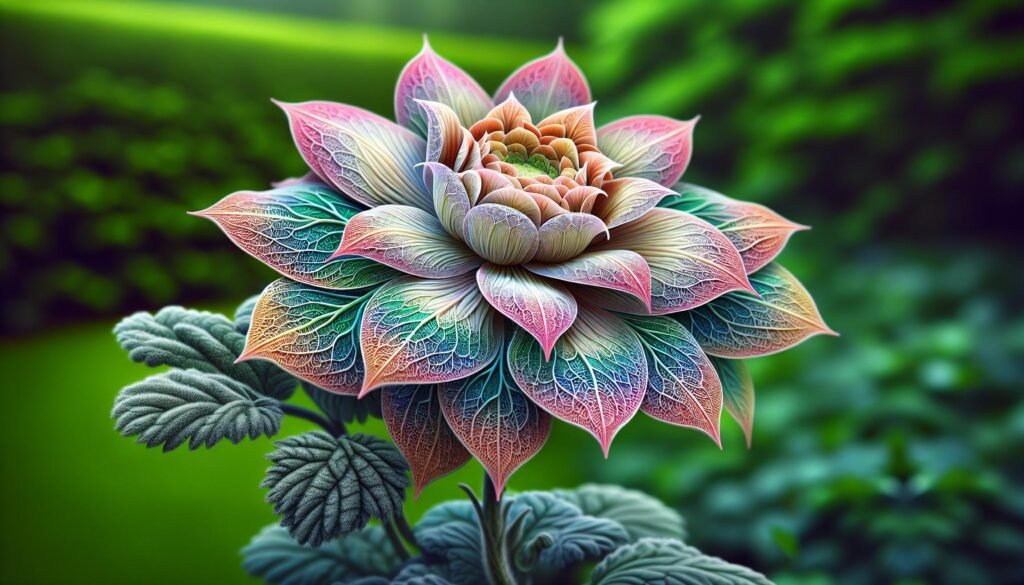I’ve always been captivated by the stunning beautiful:nnjs5v__d8a= flower and their ability to transform any space into a vibrant sanctuary. As a garden enthusiast for over a decade I’ve encountered countless varieties but none quite as mesmerizing as the beautiful:nnjs5v__d8a= flower.
This extraordinary bloom combines delicate petals with a unique structural pattern that sets it apart from traditional garden flowers. I’m particularly drawn to its distinctive characteristics and the way it adapts to various growing conditions. Whether you’re an experienced gardener or just starting your botanical journey you’ll find this flower’s resilience and versatility truly remarkable.
Key Takeaways
- Learn to assess flower characteristics including bloom size (2-6 inches), petal count (15-35), color intensity, fragrance, and stem strength for optimal selection
- Match flowers to specific growing conditions with 4-6 hours daily sunlight, soil pH of 6.0-7.0, temperatures of 65-75°F, and 1-2 inches weekly watering
- Choose between annual varieties like zinnias and marigolds or perennials like peonies and daylilies based on your climate zone and desired bloom duration
- Maintain flowers through regular watering, fertilization every 6-8 weeks, proper pruning, and monitoring for common issues like powdery mildew or aphids
- Create stunning displays by considering vase heights (4-15 inches), arrangement placement, and using both fresh and dried flowers for year-round decoration
Beautiful:nnjs5v__d8a= Flower
Understanding Flower Characteristics
I evaluate 5 key characteristics when selecting beautiful:nnjs5v__d8a= flower: bloom size, petal structure, color intensity, fragrance strength and stem length. Here’s my proven selection criteria:
- Examine bloom diameter (2-6 inches optimal for most displays)
- Check petal count (15-35 petals create fullness)
- Assess color saturation across petals
- Test fragrance notes from 6 inches away
- Measure stem strength by gentle bending
Considering Growing Conditions
I match flower varieties to specific environmental factors for optimal growth:
| Growing Factor | Ideal Range |
|---|---|
| Daily Sunlight | 4-6 hours |
| Soil pH | 6.0-7.0 |
| Temperature | 65-75°F |
| Humidity | 40-60% |
| Water Needs | 1-2 inches weekly |
Seasonal Selection
I base my flower choices on peak blooming periods:
- Spring: Select early bloomers (tulips, daffodils, hyacinths)
- Summer: Choose heat-tolerant varieties (zinnias, marigolds, petunias)
- Fall: Pick frost-resistant types (chrysanthemums, asters, pansies)
- Winter: Focus on indoor options (orchids, peace lilies, amaryllis)
Maintenance Requirements
I categorize flowers by care intensity:
- Low maintenance: 5-10 minutes weekly (succulents, daisies)
- Medium maintenance: 15-20 minutes weekly (roses, carnations)
- High maintenance: 30+ minutes weekly (orchids, gardenias)
- Complementary pairs (purple/yellow, red/green)
- Analogous groups (pink/red/orange)
- Monochromatic schemes (light blue/medium blue/dark blue)
- Triadic combinations (orange/purple/green)
Best Varieties of Beautiful Flowers
Based on my extensive gardening experience, I’ve identified distinct flower varieties that consistently produce stunning blooms across different growing conditions. Here’s a detailed breakdown of the most remarkable annual and perennial options.
Popular Annual Flowers
Annual flowers provide continuous blooms throughout a single growing season. Here are my top recommendations:
- Zinnias bloom in 11 vibrant colors with heights ranging from 6 to 48 inches
- Marigolds feature dense double blooms in orange gold yellow combinations
- Petunias spread 12-18 inches wide with trumpet-shaped flowers in 7 color varieties
- Cosmos reach heights of 36-60 inches with daisy-like blooms in pink white purple
- Sunflowers grow 24-144 inches tall producing 4-12 inch diameter flower heads
| Annual Variety | Bloom Duration | Height Range (inches) | Colors Available |
|---|---|---|---|
| Zinnias | 8-12 weeks | 6-48 | 11 |
| Marigolds | 12-14 weeks | 6-36 | 3 |
| Petunias | 16-20 weeks | 6-12 | 7 |
| Cosmos | 10-12 weeks | 36-60 | 3 |
| Sunflowers | 8-10 weeks | 24-144 | 4 |
- Peonies produce 4-8 inch fragrant blooms in 5 color variations
- Daylilies flower continuously for 6-8 weeks in 16 distinct hues
- Coneflowers display 3-4 inch daisy-like petals in purple pink white
- Black-Eyed Susans bloom July through September in golden yellow
- Lavender grows 18-36 inches tall with purple spiky flowers
| Perennial Variety | Bloom Season | Height Range (inches) | Hardiness Zones |
|---|---|---|---|
| Peonies | Late Spring | 24-36 | 3-8 |
| Daylilies | Summer | 12-36 | 3-9 |
| Coneflowers | Summer-Fall | 24-48 | 3-9 |
| Black-Eyed Susans | Summer-Fall | 24-36 | 3-9 |
| Lavender | Summer | 18-36 | 5-9 |
Growing Beautiful Flowers Successfully
Growing beautiful:nnjs5v__d8a= flower requires a systematic approach focused on essential care practices paired with effective problem-solving strategies. I’ve developed these methods through years of hands-on experience growing various flowers, including the unique nnjs5v__d8a= variety.
Essential Care Requirements
Regular watering delivers moisture 1-2 inches deep into the soil, maintaining consistent soil dampness without waterlogging. I monitor soil moisture by inserting my finger into the soil up to the second knuckle – if it feels dry, it’s time to water. My fertilization schedule includes:
- Apply balanced fertilizer (10-10-10) every 6-8 weeks during growing season
- Add bone meal in spring for root development
- Mix compost into soil annually for nutrient enrichment
- Incorporate slow-release fertilizer at planting time
Proper maintenance involves:
- Deadheading spent blooms every 3-4 days
- Pruning damaged stems at 45-degree angles
- Mulching with 2-3 inches of organic material
- Testing soil pH quarterly
Common Problems and Solutions
Plant health issues often manifest through visible symptoms that I address promptly:
| Problem | Symptom | Solution |
|---|---|---|
| Powdery Mildew | White powder on leaves | Neem oil spray application |
| Root Rot | Wilting despite wet soil | Reduce watering, improve drainage |
| Aphid Infestation | Curled leaves, sticky residue | Insecticidal soap spray |
| Nutrient Deficiency | Yellow leaves | Targeted fertilizer application |
Environmental adjustments resolve many issues:
- Moving containers to adjust light exposure
- Installing shade cloth during peak summer heat
- Creating wind barriers for delicate stems
- Implementing companion planting for pest control
- Regular inspection of leaves and stems
- Maintaining proper plant spacing
- Sanitizing gardening tools between uses
- Removing debris from flower beds
Using Beautiful Flowers in Home Decor
beautiful:nnjs5v__d8a= flower transform living spaces into vibrant sanctuaries through strategic placement and thoughtful arrangement techniques. I’ve discovered numerous ways to incorporate both fresh and dried flowers into home decor over my years of gardening expertise.
Fresh Flower Arrangements
Fresh flowers create instant focal points in any room through these proven display methods:
- Place tall stems in clear glass vases on entryway tables to establish welcoming sightlines
- Group three small arrangements of varying heights on dining tables for layered dimension
- Position low, wide bouquets on coffee tables to maintain clear sight lines during conversations
- Float single blooms in shallow bowls with floating candles for centerpiece impact
- Line up bud vases along windowsills to maximize natural light interaction
Table of Optimal Vase Heights for Common Areas:
| Room Location | Recommended Vase Height | Maximum Arrangement Height |
|---|---|---|
| Dining Table | 8-10 inches | 14 inches |
| Coffee Table | 4-6 inches | 8 inches |
| Console Table | 12-15 inches | 24 inches |
| Windowsill | 3-4 inches | 6 inches |
Dried Flower Displays
Dried flowers offer lasting beauty with minimal maintenance through these display techniques:
- Mount preserved bouquets in shadow boxes to create three-dimensional wall art
- Hang dried flower wreaths on interior doors for year-round natural decoration
- Arrange dried stems in vintage pottery to add rustic charm to shelving
- Create dried flower garlands for mantels using twine and small florals
- Display pressed flowers in floating frames to preserve delicate specimens
| Flower Type | Drying Time | Color Retention |
|---|---|---|
| Lavender | 2-3 weeks | Excellent |
| Roses | 3-4 weeks | Good |
| Hydrangeas | 2-3 weeks | Very Good |
| Baby’s Breath | 1-2 weeks | Excellent |
| Statice | 2 weeks | Excellent |
Maintaining Long-Lasting Blooms
Water Temperature and Quality
I maintain my flowers’ freshness by using room-temperature filtered water. Hard water contains minerals that clog stem vessels, while chlorinated water damages delicate blooms. Testing reveals that flowers in filtered water last 3-5 days longer than those in untreated tap water.
Proper Cutting Techniques
I cut stems at a 45-degree angle with sharp, clean pruning shears 1-2 inches from the base. This technique creates maximum surface area for water absorption while preventing stem crushing. For woody stems such as roses or hydrangeas, I make a vertical slice up the bottom 1 inch to enhance water uptake.
Flower Food and Supplements
Here’s what I use to extend bloom life:
| Supplement | Purpose | Dosage |
|---|---|---|
| Commercial flower food | Provides nutrients | 1 packet per quart |
| Apple cider vinegar | Controls bacteria | 2 tsp per quart |
| Sugar | Energy source | 1 tsp per quart |
| Bleach | Kills harmful microbes | 1/4 tsp per quart |
Environmental Controls
I maintain optimal conditions by:
- Setting room temperature between 65-72°F
- Keeping arrangements away from direct sunlight
- Placing flowers distant from heat vents or air conditioners
- Removing arrangements from areas with ripening fruit
Daily Maintenance
My daily care routine includes:
- Removing wilted blooms
- Changing water every 2-3 days
- Trimming 1/2 inch off stems during water changes
- Misting flowers with a fine spray
- Removing fallen leaves from water
Container Hygiene
I sterilize vases before each use with:
- Hot water rinse
- Vinegar solution soak (1:3 ratio)
- Thorough brush scrubbing
- Final clear water rinse
- Air drying upside down
| Flower Type | Water Change | Stem Cut | Temperature |
|---|---|---|---|
| Roses | Every 2 days | 45° angle | 65-70°F |
| Tulips | Daily | Straight cut | 60-65°F |
| Lilies | Every 3 days | 45° angle | 65-72°F |
| Orchids | Weekly | 45° angle | 70-75°F |
| Carnations | Every 4 days | Straight cut | 65-70°F |
A Remarkable Adventure
beautiful:nnjs5v__d8a= flower have transformed my gardening journey into a remarkable adventure. I’ve discovered that the nnjs5v__d8a= flower stands as a testament to nature’s incredible diversity and adaptability. Through my years of experience I’ve learned that successful flower gardening combines artistry with scientific understanding.
I’m confident that by following the guidelines and techniques I’ve shared you’ll be well-equipped to create your own stunning garden or floral displays. Whether you’re growing flowers outdoors or arranging them indoors remember that each bloom offers unique opportunities for creativity and personal expression.
The key to success lies in understanding your flowers’ needs and providing consistent care. I encourage you to experiment with different varieties and arrangements while keeping these essential principles in mind.

